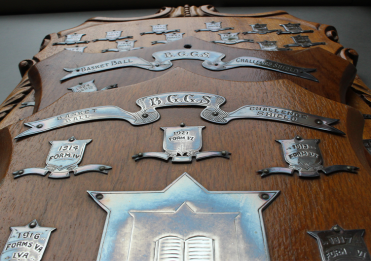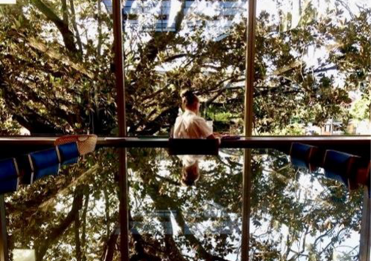Most schools rely on a timetable to assist students and staff with a familiar structure for their day. This has always been the process at Girls Grammar, and it may be interesting to note that there is a framed, hand-written copy of the 1899 timetable in the School Museum. This is an interesting artefact and a glimpse into the world of the School at that time. The sequence of the School day is laid out in elegant copperplate handwriting that seems to announce, ‘we know what we are doing, and we do it with grace and confidence’.
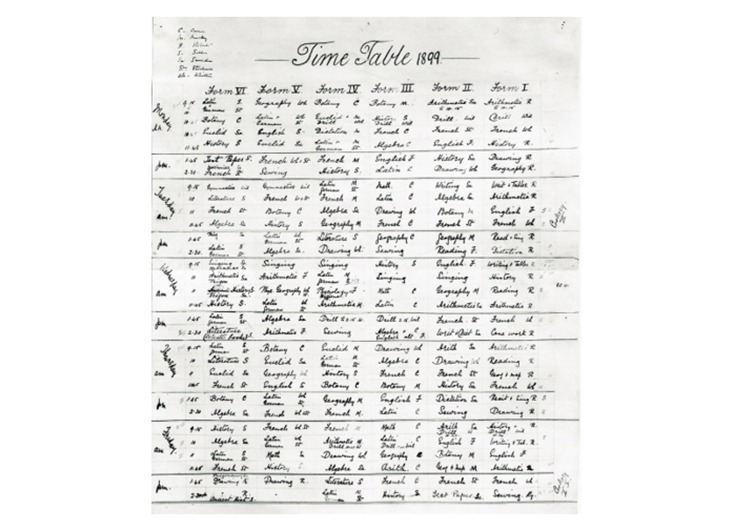
Maud Sellers’ 1899 Timetable as Acting Lady Principal following Miss Fewings dismissal
This early timetable echoes the traditional structure of designated times for different subjects, and there are revealing aspects that are evident. The girls were offered a range of subjects from mathematics, languages and the humanities, but only one science was mentioned: Botany. Our ‘broad-based liberal education’ was verified because, as well as these more academic subjects, all School year levels undertook singing, sewing, drawing, and physical education.
There were some interesting additions: Form I had lessons called ‘Writing and Tables’, ‘Read and Sing’, ‘Dictation’, and ‘Cane work’. Cookery was also added in the for Forms II, III, and V.
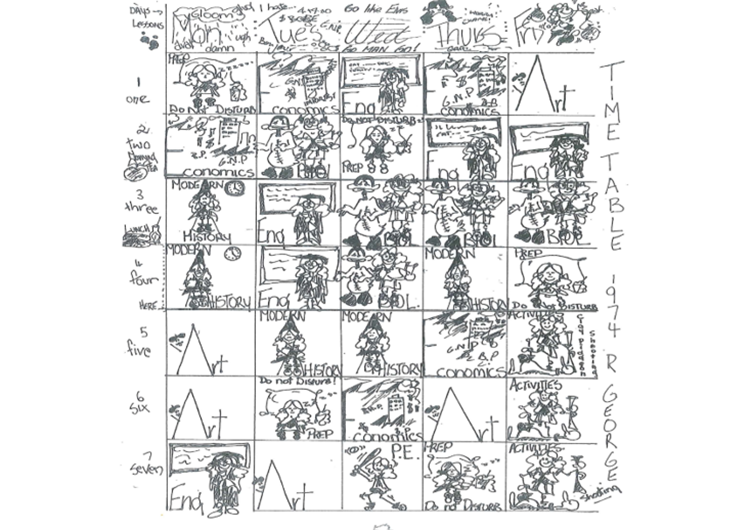
Timetable cartoon 1975 Magazine by Raeleigh George (1975)
School timetables like this have been in place for hundreds of years and, rightly or wrongly, very little about the basic principles have changed. However, at Girls Grammar, the timetable and structure of the day have certainly evolved over the past 145 years.
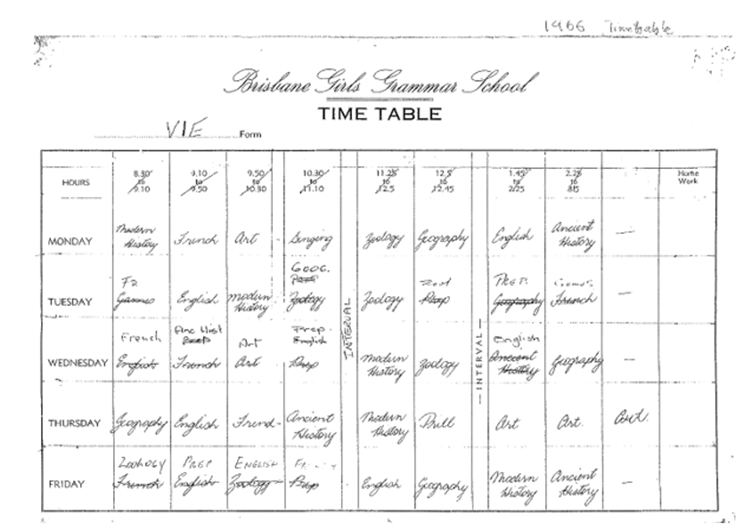
1966 Timetable for VIE
The first noticeable thing is the array of subjects available to students. The School currently offers 32 subjects. No wonder the timetable is more complicated in the twenty-first century! In addition, the starting and finishing times of the day, the length of lessons, and the timing and duration of morning tea and lunch have been adjusted on many occasions.
In the early years of Brisbane Girls Grammar School, students had a limited curriculum and the timetable most likely took one day to create. It was handwritten and pinned to a notice board in the staff room. Teachers made their copies by reading very closely and copying down their lessons and classes. Director of Information Services, Mrs Kristine Cooke, told me she had to do this when she started teaching here in 1972. She then had to read out the complete, appropriate level timetable to her form class, who made their own copies.
The 2021 BGGS timetable revolves around student choices and takes approximately three months to construct, even with the assistance of a computer and specialised software. The size of the School, student and staff choices, and rooming all contribute to this timetable jigsaw.
Today, all students and staff are given a hard copy of their personal timetable, which they can also access electronically on the School’s learning management platform, Minerva.
Schools are complicated organisations. The Girls Grammar comprises more than 1500 staff and students, a horde of locations, venues, and spaces, and a curriculum that offers the widest possible choices. Is it any wonder that we rely on that one deceptively simple document, which provides stability and structure: a piece of paper or a screenshot that tells us where we should be and when? It is the first item both teachers and students want on the first day of a new school year: their own timetable.
Ms Tennille Cummings
Dean of Operations


